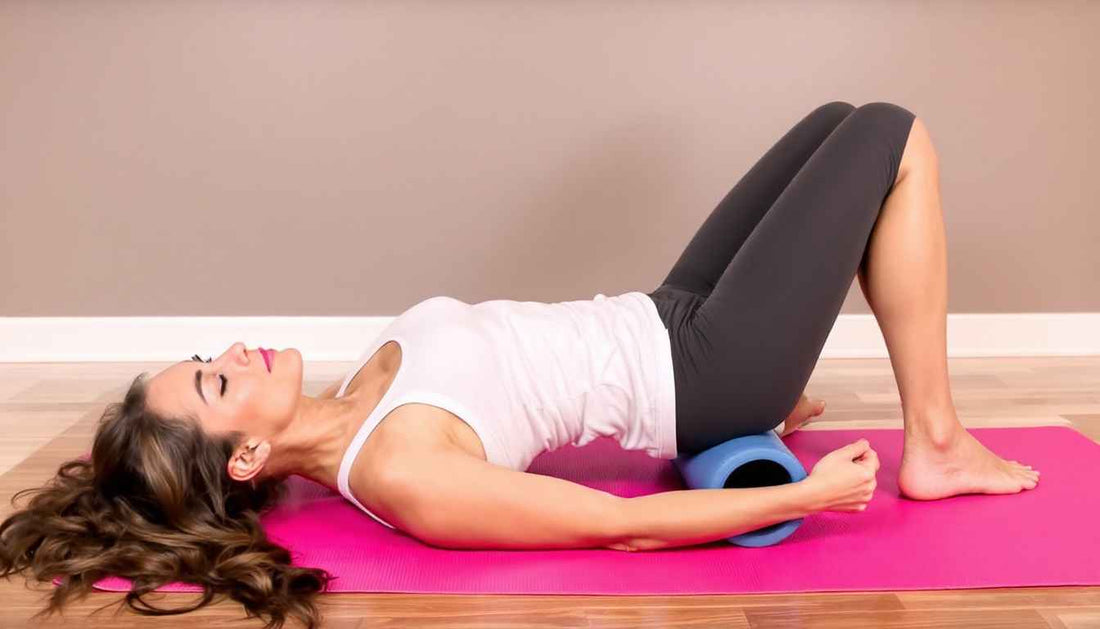
Myofascial Release Therapy: How to Relieve Pain and Restore Mobility
Share
If you’re dealing with chronic muscle tightness, mobility issues, or nagging discomfort that never seems to go away, the problem might be deeper than your muscles. Myofascial release therapy targets the fascia — the connective tissue surrounding your muscles — to reduce pain, restore flexibility, and get you moving freely again. In this article, we’ll explain how it works, key techniques, and tools you can use at home for real relief.
What Is Myofascial Release Therapy?
Myofascial release therapy is a form of manual therapy that focuses on relieving tension in the fascia — the web-like connective tissue that surrounds muscles, bones, and joints. When this tissue becomes tight or inflamed, it can create pain, restrict movement, and even affect posture.
Myofascial release uses sustained pressure and gentle stretching to loosen these restrictions and restore natural motion.
What Causes Myofascial Pain?
- Repetitive movements or poor posture
- Trauma or injury
- Surgery or inflammation
- Stress and lack of movement
Trigger points in the fascia can lead to widespread referred pain, making myofascial release especially effective when traditional massage doesn’t fully relieve symptoms.
5 Myofascial Release Techniques You Can Use at Home
1. Foam Rolling
Rolling slowly over large muscle groups (like quads, hamstrings, and upper back) helps release tension and improve circulation.
Tool Tip: Use a medium-density foam roller to avoid bruising or excessive pressure.
2. Ball Rolling Therapy
Place a massage ball under the affected area and apply pressure for 30–90 seconds. This is great for targeting small, hard-to-reach areas like glutes and shoulders.
Use It For: Piriformis syndrome, shoulder tension, and foot pain.
3. Stretch-and-Hold Method
Gently stretch the affected area and hold for 90–120 seconds to allow the fascia to release.
Example: Pec stretch against a wall, or hamstring stretch on the floor.
4. Massage Gun with Flat Head
Use a massage gun with a flat or dampener head to gently vibrate the fascia. Focus on long, sweeping strokes instead of pounding deep pressure.
Pro Tip: Stay on each area for 30 seconds to 1 minute.
5. Myofascial Stretching
Unlike traditional stretching, myofascial stretching involves holding long, sustained stretches with relaxed breathing and no bouncing.
Try This: Supine spinal twist or supported chest opener using yoga blocks.
Best Tools for Myofascial Release
- Foam rollers (medium-density)
- Massage balls (lacrosse, peanut)
- Massage guns with fascia-safe attachments
- Yoga blocks and straps
- Heating pads (to warm fascia pre-release)
Related Articles
- Self-Myofascial Release Techniques
- Trigger Point Therapy Techniques
- Massage Techniques for Lower Back Pain
FAQs
What is myofascial release therapy?
Myofascial release therapy involves applying gentle pressure to the fascia to relieve tension, improve mobility, and reduce pain.
Does myofascial release therapy work?
Yes. It has been shown to reduce pain, improve posture, and restore movement, especially in people with chronic tension or injury.
Can I do myofascial release at home?
Absolutely. Tools like foam rollers and massage balls make it easy to perform fascia release techniques safely and effectively.
How often should I do myofascial release?
2–3 times per week is ideal for maintenance. Daily use may be beneficial for chronic tension or post-exercise recovery.
Final Thoughts
Myofascial release therapy empowers you to take control of your pain and mobility. Whether you sit at a desk all day or train like an athlete, loosening your fascia can bring significant relief and long-term health benefits.
Ready to Roll?
Download our free guide: "Myofascial Release Toolkit: Tools & Routines You Can Do at Home" — and get exclusive access to our recommended foam rollers, massage balls, and stretching aids.
